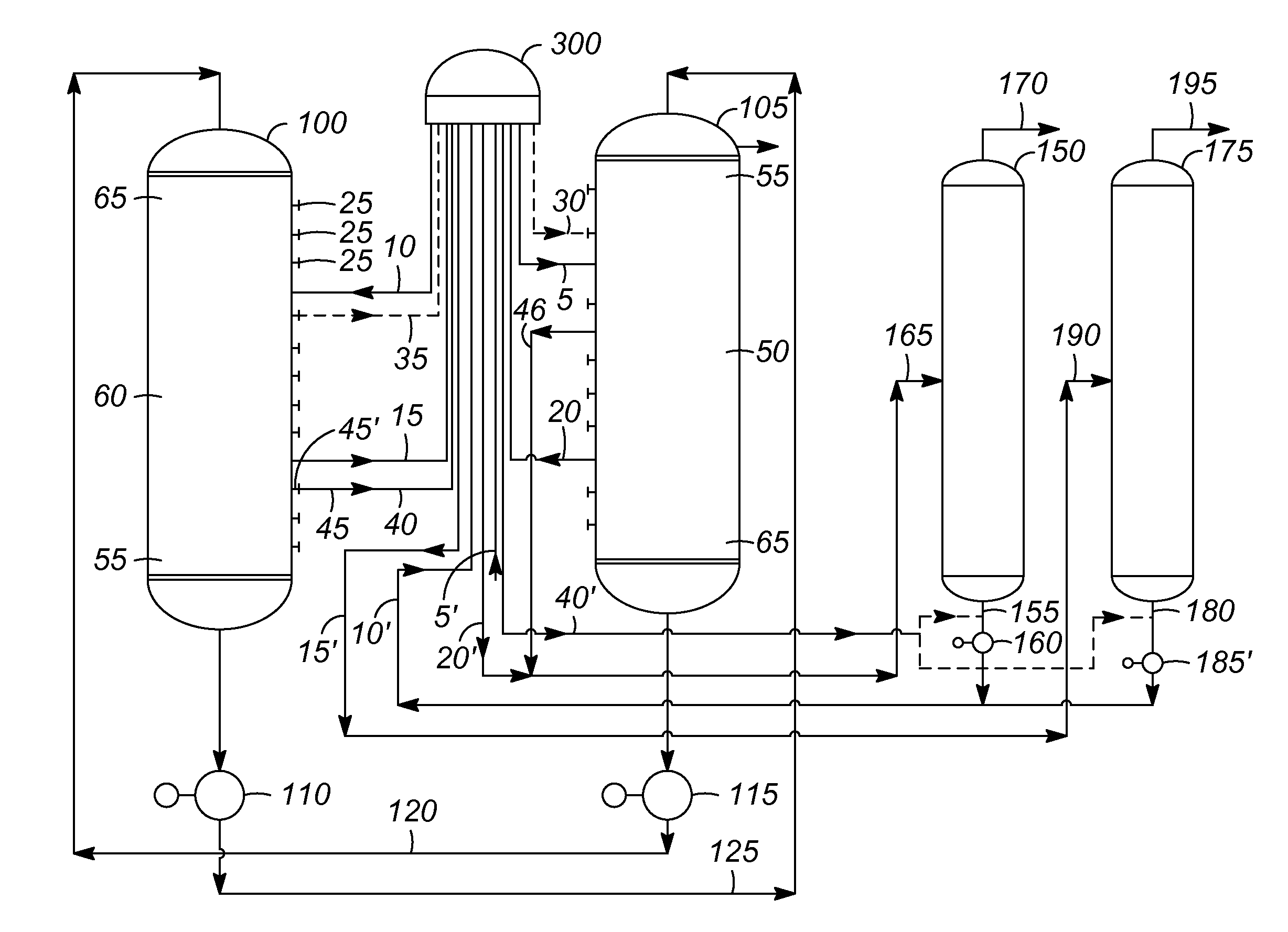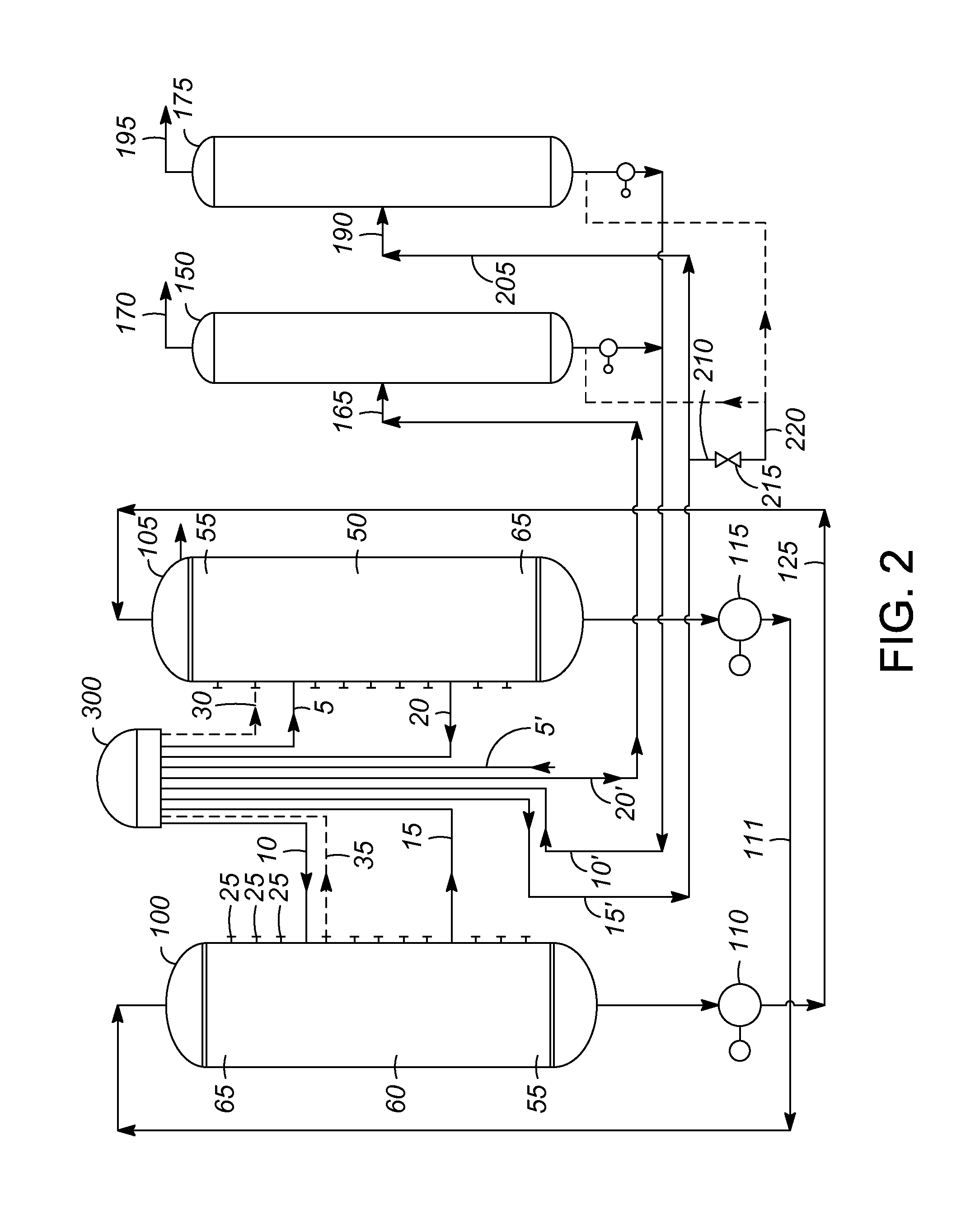System and process for recovering products using simulated-moving-bed adsorption
- Summary
- Abstract
- Description
- Claims
- Application Information
AI Technical Summary
Benefits of technology
Problems solved by technology
Method used
Image
Examples
Embodiment Construction
[0025]Adsorptive separation is applied to the recovery of a variety of hydrocarbon and other chemical products. Chemical separations using this approach which have been disclosed include the separation of mixtures of aromatics into specific aromatic isomers, of linear from nonlinear aliphatic and olefinic hydrocarbons, of either paraffins or aromatics from a feed mixture comprising both aromatics and paraffins, of chiral compounds for use in pharmaceuticals and fine chemicals, of oxygenates such as alcohols and ethers, and of carbohydrates such as sugars. Aromatics separations include mixtures of dialkyl-substituted monocyclic aromatics and of dimethyl naphthalenes. A major commercial application, which forms the focus of the prior references and of the following description of the present invention without so limiting it, is the recovery of para-xylene and / or meta-xylene from mixtures of C8 aromatics, due to typically high purity requirements for these products. Such C8 aromatics u...
PUM
| Property | Measurement | Unit |
|---|---|---|
| Fraction | aaaaa | aaaaa |
| Fraction | aaaaa | aaaaa |
| Fraction | aaaaa | aaaaa |
Abstract
Description
Claims
Application Information
 Login to View More
Login to View More - R&D
- Intellectual Property
- Life Sciences
- Materials
- Tech Scout
- Unparalleled Data Quality
- Higher Quality Content
- 60% Fewer Hallucinations
Browse by: Latest US Patents, China's latest patents, Technical Efficacy Thesaurus, Application Domain, Technology Topic, Popular Technical Reports.
© 2025 PatSnap. All rights reserved.Legal|Privacy policy|Modern Slavery Act Transparency Statement|Sitemap|About US| Contact US: help@patsnap.com



